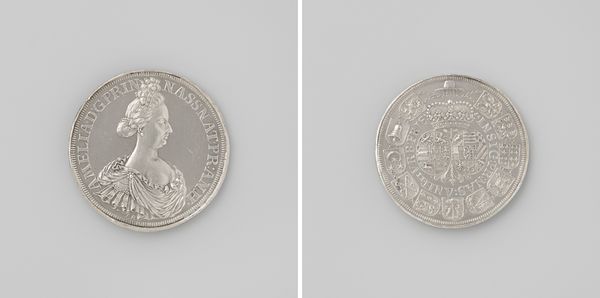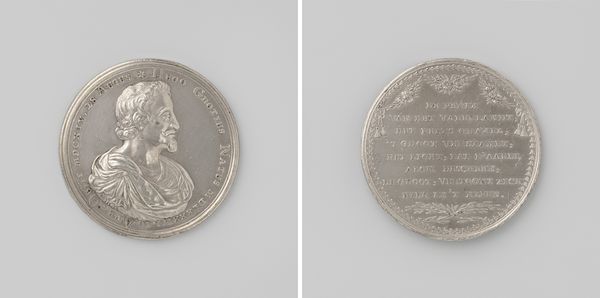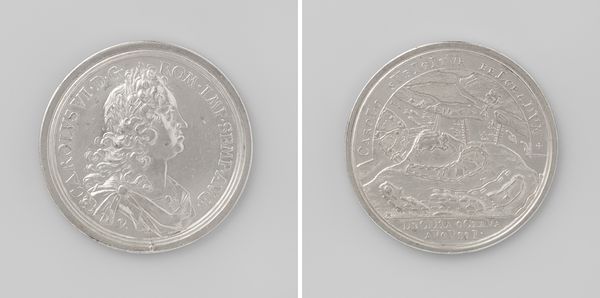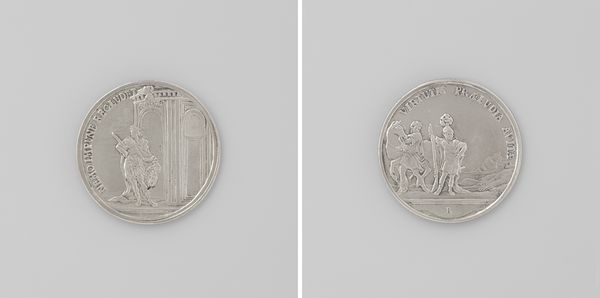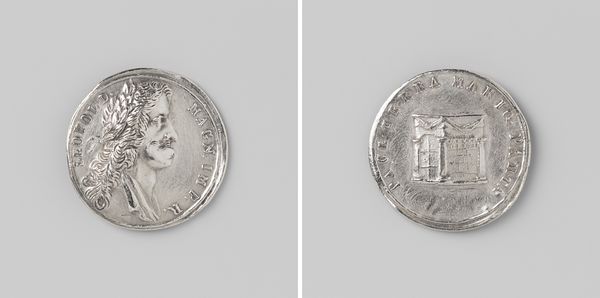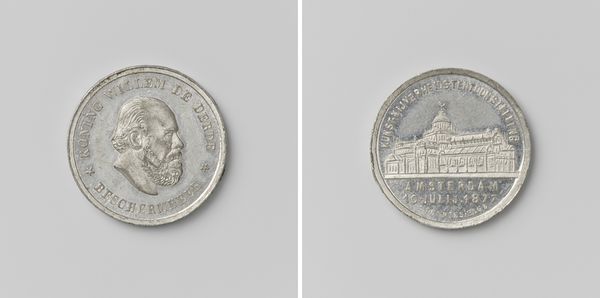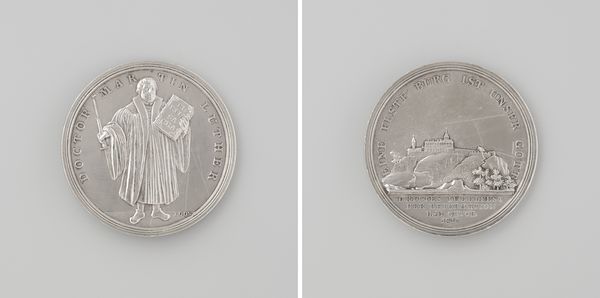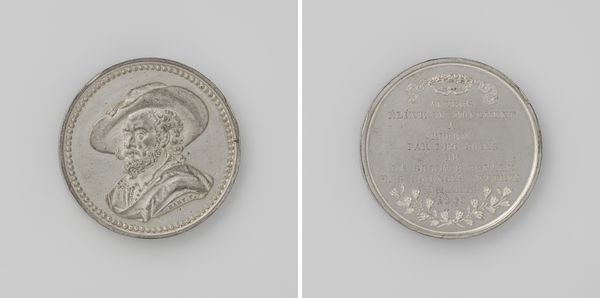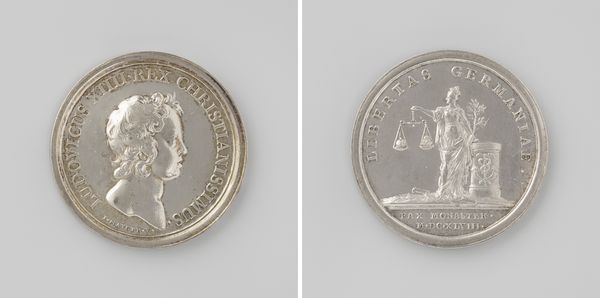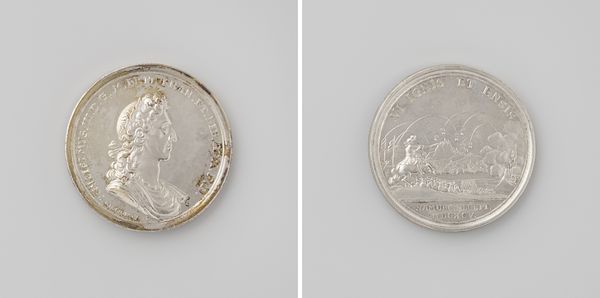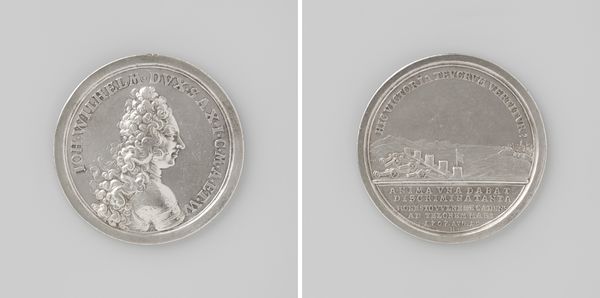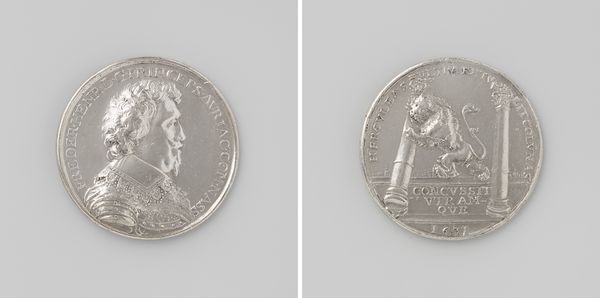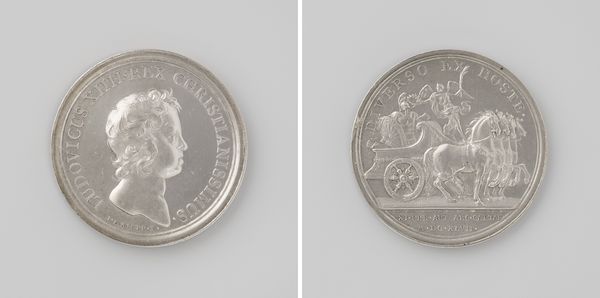
Nicolaas Witsen, burgemeester van Amsterdam, ambassadeur bij de koning van Engeland 1695
0:00
0:00
anonymous
Rijksmuseum
print, metal, relief
#
portrait
#
decorative element
#
baroque
# print
#
metal
#
relief
Dimensions: diameter 2.4 cm, weight 8.33 gr
Copyright: Rijks Museum: Open Domain
Editor: This is a baroque, metal relief piece from 1695 titled, "Nicolaas Witsen, burgemeester van Amsterdam, ambassadeur bij de koning van Engeland." It almost looks like a coin. The depiction is regal. What sociopolitical narratives can be extracted from this portrait? Curator: This medal presents us with an opportunity to examine the intersection of power, representation, and identity in the late 17th century. It’s fascinating how portraiture, even in this small, reproducible form, served to solidify social hierarchies. Who was Nicolaas Witsen, and why was it important to commemorate his image and role in this way? Editor: I see, so the artwork functions as both art and propaganda. Witsen's image almost immortalizes him and his political standing within the Netherlands and abroad. How can a contemporary audience interpret this historical narrative through the lens of modern representation politics? Curator: Exactly. We can question the lasting power of such imagery. Whose stories are deemed worthy of representation, and who controls those narratives? What’s fascinating to me is considering how visual culture perpetuates systems of power, even today. Think about the power of state propaganda. Can visual culture be truly neutral? Editor: I think that the medal gives us a sense of Dutch identity in the late 17th century, and raises important questions on societal class dynamics. Considering whose stories get told, it highlights a potential bias toward the powerful. Curator: Indeed. This is a prime example of how studying historical artifacts can fuel contemporary dialogues on visibility, representation, and power structures.
Comments
No comments
Be the first to comment and join the conversation on the ultimate creative platform.
